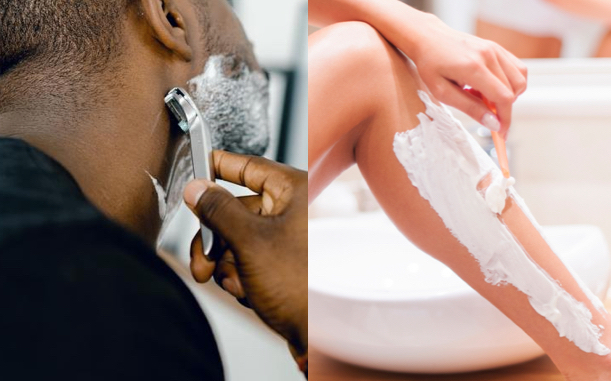Wet vs. dry shaving

Key Points
- Wet shaving provides a closer, smoother shave with water and cream, while dry shaving is faster and better for sensitive skin but less precise.
- For acne-prone skin, use sharp razors, acne-safe creams, and shave with the grain to minimize irritation and breakouts.
- Women benefit from wet shaving post-shower using thick cream and gentle strokes—especially around sensitive areas like underarms and bikini lines.
What is Wet Shaving, and How Does It Differ from Dry Shaving?
Wet shaving is a traditional method that involves soaking the area to be shaved with warm water, applying foam or gel, and using a razor for a clean shave. In contrast, dry shaving is typically done with electric razors, without water or shaving gels, and is ideal for those needing a quick shave.
Advantages of Wet Shaving
Wet shaving provides the closest shave possible, as soaking hair in water and gel softens it for easier cutting. This prevents uneven shaving, hair breakage, and skin bruises. However, wet shaving takes more time and requires proper skin preparation. A sharp blade is essential to achieve a smooth and irritation-free shave.
Benefits of Dry Shaving
Dry shaving is gentler on sensitive skin as it cuts hair slightly above the skin surface, reducing irritation. However, the shave is not as close as wet shaving, and electric razors used for dry shaving are costlier and need regular maintenance.
Choosing Between Wet and Dry Shaving
The choice depends on your preferences, skin type, available time, and budget. Both methods have their benefits, so pick the one that works best for you.
Shaving Tips for Acne-Prone Skin
- Prepare with Warm Water: Shower with warm water to soften hair and reduce irritation.
- Cleanse Your Skin: Use an acne-fighting cleanser with ingredients like salicylic acid.
- Use a High-Quality Razor: Choose a standard or single-blade razor over electric razors.
- Keep Razors Clean and Sharp: Prevent breakouts with fresh, rust-free blades.
- Opt for Non-Comedogenic Creams: Use moisturizing shaving creams free of alcohol and pore-clogging ingredients.
- Shave with the Grain: Always shave in the direction of hair growth.
- Hydrate Post-Shave: Apply an oil-free moisturizer or sunscreen to protect and hydrate skin.
Wet Shaving Tips for Women
For Legs:
- Shave after a warm bath or shower.
- Use a thick shaving cream layer.
- Shave with long, even strokes in the direction of hair growth.
- Be cautious around bony areas like ankles and knees.
For Underarms and Bikini Area:
- Moisten the skin and apply shaving gel.
- Shave from the bottom up in one direction.
- Avoid repeated shaving over the same area to prevent irritation.
- Shave underarms at night to allow skin recovery before applying deodorant.
Post-Shaving Care
Let your skin rest for at least 30 minutes before applying any products. If immediate moisturizing is needed, use a cream instead of a lotion. Avoid chlorine, saltwater, tanning lotions, and alcohol-based sunscreens, as they can irritate freshly shaved skin.
Recommended Products
- Razor: Gillette Mach 3 Turbo on Amazon
- Shaving Cream: MDacne Soothing Shave Cream Trio
FAQs
Q1. What is wet shaving?
A: Wet shaving uses water, foam, or gel with a razor for a close shave.
Q2. How does it differ from dry shaving?
A: Dry shaving uses electric razors without water or gel for quick results.
Q3. What are the benefits of wet shaving?
A: It provides a closer shave, softens hair, and reduces irritation.
Q4. Why is a sharp blade essential?
A: A sharp blade ensures clean cuts, minimizing irritation and skin damage.
Q5. What are the pros of dry shaving?
A: It’s quicker and gentler for sensitive skin but doesn’t provide as smooth a shave.
Q6. How should I choose between methods?
A: Consider your skin type, time, and budget to decide.
Q7. Tips for acne-prone skin during shaving?
A: Use warm water, acne cleansers, high-quality razors, and shave with the grain.
Q8. Tips for women’s wet shaving?
A: Shave after a warm bath, use shaving cream, and follow hair growth direction.
Q9. Post-shave care tips?
A: Rest skin for 30 minutes, use creams over lotions, and avoid irritants like chlorine or alcohol.
More info:
How to shave with acne - 8 dermatologist tips
The best razors for a bump-free shave
To find the right acne treatments for your unique skin, take the free skin assessment by clicking here.



